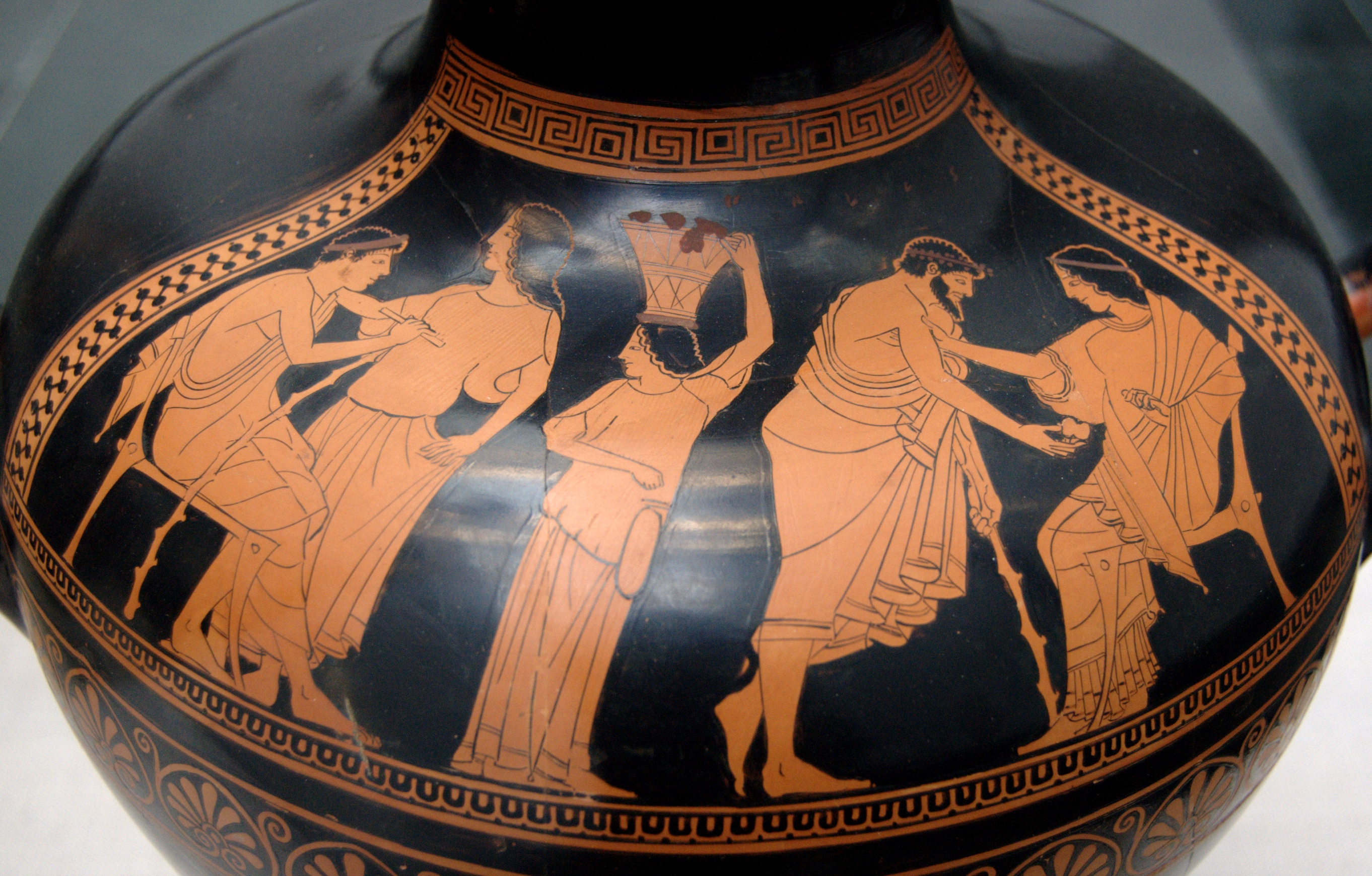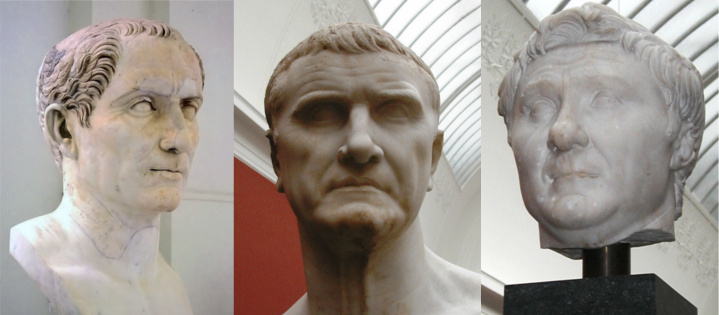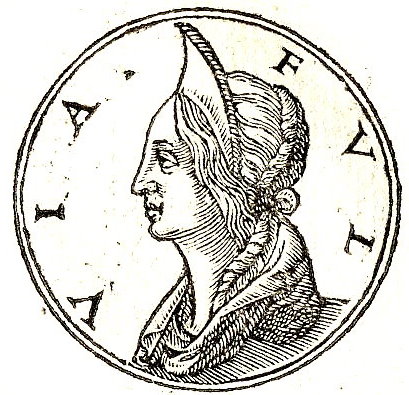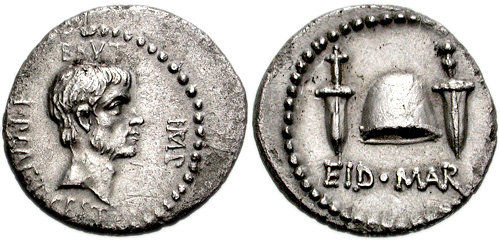|
Glaphyra (hetaera)
Glaphyra ( el, Γλαφύρα) was a hetaera, a form of courtesan, who lived in the 1st century BC. Glaphyra was famed and celebrated in antiquity for her beauty, charm and seductiveness. Her marriage to Archelaus the elder of Cappadocia gave her political power. Her later affair with Mark Antony occasioned a vulgar poem from Octavian Caesar. Marriage to Archelaus Glaphyra was a Greek woman from Cappadocia from obscure origins. Glaphyra had married a Cappadocian Greek nobleman called Archelaus, the High Priest Ruler of the temple state of Comana, Cappadocia. Archelaus was the High Priest of the Roman Goddess of War, Bellona. Through her marriage to Archelaus, Glaphyra became a ruler of the temple state. Archelaus' father of the same name had descended from King Mithridates VI of Pontus. Glaphyra bore Archelaus two sons: * Archelaus Sisines, also known as King Archelaus of Cappadocia who reigned from 36 BC until his death in 17 AD * Sisines In 47 BC the Roman Dictator Gai ... [...More Info...] [...Related Items...] OR: [Wikipedia] [Google] [Baidu] |
Hetaera
Hetaira (plural hetairai (), also hetaera (plural hetaerae ), ( grc, ἑταίρα, "companion", pl. , la, hetaera, pl. ) was a type of prostitute in ancient Greece, who served as an artist, entertainer and conversationalist in addition to providing sexual service. Unlike the rule for ancient Greek women, hetairas would be highly educated and were allowed in the symposium. Summary Traditionally, historians of ancient Greece have distinguished between ''hetairai'' and ''pornai'', another class of prostitute in ancient Greece. In contrast to pornai, who provided sex for numerous clients in brothels or on the street, hetairai were thought to have had only a few men as clients at any one time, to have had long-term relationships with them, and to have provided companionship and intellectual stimulation as well as sex. For instance, Charles Seltman wrote in 1953 that "hetaeras were certainly in a very different class, often highly educated women". More recently, however, historia ... [...More Info...] [...Related Items...] OR: [Wikipedia] [Google] [Baidu] |
First Triumvirate
The First Triumvirate was an informal political alliance among three prominent politicians in the late Roman Republic: Gaius Julius Caesar, Gnaeus Pompeius Magnus and Marcus Licinius Crassus. The constitution of the Roman republic had many veto points. In order to bypass constitutional obstacles and force through the political goals of the three men, they forged in secret an alliance where they promised to use their respective influence to support each other. The "triumvirate" was not a formal magistracy, nor did it achieve a lasting domination over state affairs. It was formed between the three men due to their mutual need to overcome opposition in the senate against their proposals in the previous years. Initially secret, it emerged publicly during Caesar's first consulship in 59 BC to push through legislation for the three allies. Caesar secured passage of an agrarian law which helped resettle Pompey's veterans, a law ratifying Pompey's settlements after the Third Mit ... [...More Info...] [...Related Items...] OR: [Wikipedia] [Google] [Baidu] |
Anatolian Greeks
The Anatolian Greeks, also known as Asiatic Greeks or Asia Minor Greeks, make up the ethnic Greek populations who lived in Anatolia from 1200s BCE as a result of Greek colonization until the forceful population exchange between Greece and Turkey in 1923, though some communities in Anatolia survive to the present day. Cappadocian Greeks Cappadocian Greeks also known as Greek Cappadocians ( el, Έλληνες-Καππαδόκες, Ελληνοκαππαδόκες, Καππαδόκες; tr, Kapadokyalı Rumlar) or simply Cappadocians are an ethnic Greek community native to the geographical region of Cappadocia in central-eastern Anatolia. Pontic Greeks The Pontic Greeks ( el, Πόντιοι, or , ; tr, Pontus Rumları or , ka, პონტოელი ბერძნები, ) are an ethnically Greek group who traditionally lived in the region of Pontus, on the shores of the Black Sea and in the Pontic Mountains of northeastern Anatolia. Other Anatolian Greeks * ... [...More Info...] [...Related Items...] OR: [Wikipedia] [Google] [Baidu] |
Greek Female Prostitutes
Greek may refer to: Greece Anything of, from, or related to Greece, a country in Southern Europe: *Greeks, an ethnic group. *Greek language, a branch of the Indo-European language family. **Proto-Greek language, the assumed last common ancestor of all known varieties of Greek. **Mycenaean Greek, most ancient attested form of the language (16th to 11th centuries BC). **Ancient Greek, forms of the language used c. 1000–330 BC. **Koine Greek, common form of Greek spoken and written during Classical antiquity. **Medieval Greek or Byzantine Language, language used between the Middle Ages and the Ottoman conquest of Constantinople. **Modern Greek, varieties spoken in the modern era (from 1453 AD). *Greek alphabet, script used to write the Greek language. *Greek Orthodox Church, several Churches of the Eastern Orthodox Church. *Ancient Greece, the ancient civilization before the end of Antiquity. *Old Greek, the language as spoken from Late Antiquity to around 1500 AD. Other uses * '' ... [...More Info...] [...Related Items...] OR: [Wikipedia] [Google] [Baidu] |
Hetairai
Hetaira (plural hetairai (), also hetaera (plural hetaerae ), ( grc, ἑταίρα, "companion", pl. , la, hetaera, pl. ) was a type of prostitute in ancient Greece, who served as an artist, entertainer and conversationalist in addition to providing sexual service. Unlike the rule for ancient Greek women, hetairas would be highly educated and were allowed in the symposium. Summary Traditionally, historians of ancient Greece have distinguished between ''hetairai'' and ''pornai'', another class of prostitute in ancient Greece. In contrast to pornai, who provided sex for numerous clients in brothels or on the street, hetairai were thought to have had only a few men as clients at any one time, to have had long-term relationships with them, and to have provided companionship and intellectual stimulation as well as sex. For instance, Charles Seltman wrote in 1953 that "hetaeras were certainly in a very different class, often highly educated women". More recently, however, historia ... [...More Info...] [...Related Items...] OR: [Wikipedia] [Google] [Baidu] |
George Crabb (writer)
George Crabb (1778–1851) was an English legal and miscellaneous writer. Life He was born on 8 December 1778 at Palgrave, Suffolk. He was educated at a school at Diss and under a private tutor. He began as a medical student, but became assistant to a bookseller. This he also shortly dropped to study for the ministry at Northampton, but experienced a sudden change in his religious views. In 1797 he came to London, and after his marriage to Maria Southgate, who subsequently edited ‘Tales for Children from the German,’ became classical master at Thorp Arch School, Yorkshire. To master German language he went in 1801 to Bremen, where he supported himself by teaching English. In 1814 he entered Magdalen Hall, Oxford, as a gentleman commoner, and shortly thereafter published his oft reprinted ''Dictionary of English Synonymes''. He graduated with a B.A. in 1821 and M.A. in 1822, with mathematical honours. He was called to the bar at the Inner Temple The Honourable Society of ... [...More Info...] [...Related Items...] OR: [Wikipedia] [Google] [Baidu] |
John Watkins (writer)
John Watkins ('' fl.'' 1792–1831) was an English miscellaneous writer, known as a biographer. He is most famous for being the author of '' An Universal Biographical and Historical Dictionary''. Life Born in Devon, he was educated at Bristol for the nonconformist ministry. Becoming dissatisfied, he conformed to the Church of England around 1786, with his friend Samuel Badcock, and for some years kept an academy in Devon. Watkins moved to London soon after beginning to write, probably about 1794. He became editor of the ''Orthodox Churchman's Magazine''. His latest preface is dated 30 May 1831. Works His first independent publication appeared in 1792, entitled ''An Essay towards the History of Bideford'', 1792. Chapter x. consists of the depositions in a trial for witchcraft held at Exeter on 14 August 1682. The work was reprinted and published at Bideford in 1883. In 1796 appeared ''The Peeper: a collection of Essays, Moral, Biographical, and Literary'' (London, 1796; 2nd edit. L ... [...More Info...] [...Related Items...] OR: [Wikipedia] [Google] [Baidu] |
Fulvia
Fulvia (; c. 83 BC – 40 BC) was an aristocratic Roman woman who lived during the Late Roman Republic. Fulvia's birth into an important political dynasty facilitated her relationships and, later on, marriages to Publius Clodius Pulcher, Gaius Scribonius Curio, and Mark Antony. All of these men would go on to lead increasingly promising political careers as ''populares'', tribunes, and supporters of Julius Caesar. Fulvia remains an important figure in ancient Roman history due to her perseverance as a woman heavily involved in politics, as well as her role in the Perusine War against Octavian (future emperor Augustus). She played an important political role behind the scenes of her three marriages. Though she is most famous for her involvement in Antony's career, there are many scholarly debates taking place over whether or not Fulvia was already involved in politics before her husbands or as a result of marrying them. However, one thing is for sure: she was highly interested ... [...More Info...] [...Related Items...] OR: [Wikipedia] [Google] [Baidu] |
Perusine War
The Perusine War (also Perusian or Perusinian War, or the War of Perusia) was a civil war of the Roman Republic, which lasted from 41 to 40 BC. It was fought by Lucius Antonius and Fulvia to support Mark Antony against his political enemy Octavian (the future Emperor Augustus). Fulvia, who was married to Mark Antony at the time of the civil war, felt strongly that her husband should be the sole ruler of Rome instead of sharing power with the Second Triumvirate, especially Octavian. Her prominence in the ensuing conflict was unusual for Roman society, where women were excluded from power and their political contributions rarely documented. Fulvia and Antony's younger brother, Lucius Antonius, raised eight legions in Italy. The army held Rome for a brief time, but was then forced to retreat to the city of Perusia (modern Perugia, Italy). During the winter of 41–40 BC, Octavian's army laid siege to the city, finally causing it to surrender due to starvation when the besiege ... [...More Info...] [...Related Items...] OR: [Wikipedia] [Google] [Baidu] |
Ariarathes X Of Cappadocia
Ariarathes X, surnamed ''Eusebes Philadelphos'', "Pious, brother-loving" ( grc, Ἀριαράθης Εὐσεβής Φιλάδελφος, Ariaráthēs Eusebḗs Philádelphos), was the king of Cappadocia from c. 42 BC to 36 BC. He was of Persian and Greek ancestry. His father was King Ariobarzanes II of Cappadocia and his mother was Queen Athenais. He became king after his brother Ariobarzanes III Philoromaios was killed. His rule did not last long as Mark Antony of Rome removed and executed him, replacing him with Sisines, who became Archelaus of Cappadocia Archelaus ( el, Ἀρχέλαος; fl. 1st century BC and 1st century, died 17 AD) was a Roman client prince and the last king of Cappadocia. Family and early life Archelaus was a Cappadocian Greek nobleman. His full name was ''Archelaus Sisin .... References * Kings of Cappadocia 36 BC deaths People executed by the Roman Republic 1st-century BC rulers in Asia Roman client rulers 1st-century BC executions ... [...More Info...] [...Related Items...] OR: [Wikipedia] [Google] [Baidu] |
Second Triumvirate
The Second Triumvirate was an extraordinary commission and magistracy created for Mark Antony, Marcus Aemilius Lepidus, and Octavian to give them practically absolute power. It was formally constituted by law on 27 November 43 BC with a term of five years; it was renewed in 37 BC for another five years before expiring in 32 BC. Constituted by the ''lex Titia'', the triumvirs were given broad powers to make or repeal legislation, issue judicial punishments without due process or right of appeal, and appoint all other magistrates. The triumvirs also split the Roman world into three sets of provinces. The triumvirate, formed in the aftermath of a conflict between Antony and the senate, emerged as a force to reassert Caesarian control over the western provinces and wage war on the ''liberatores'' led by the men who assassinated Julius Caesar. After proscriptions, purging the senatorial and equestrian orders, and a brutal civil war, the ''liberatores'' were defea ... [...More Info...] [...Related Items...] OR: [Wikipedia] [Google] [Baidu] |
Lycomedes Of Comana
Lycomedes of Comana ( gr, Λυκομήδης; fl. 1st century BC) was a Bithynian nobleman of Cappadocian Greek descent who ruled Comana, Cappadocia in the second half of the 1st century BC. Biography In 47 BC, Lycomedes was probably about 50 years old when he was named by Roman dictator, Gaius Julius Caesar, the priest of the goddess Bellona in the temple-state of Comana, and sovereign, therefore, of the surrounding country. The predecessor of Lycomedes was Archelaus, the grandson of the Pontic general Archelaus. Strabo reports that with Roman client King Polemon I of Pontus, Lycomedes besieged a fortress held by Arsaces, a rebel chief who was guarding the sons of King Pharnaces II of Pontus, until Arsaces surrendered. Later Lycomedes was a supporter of Roman triumvir Mark Antony, who at some point enlarged the territory of Lycomedes' kingdom. Due to Lycomedes’ partisanship with Mark Antony, he was deposed by Octavian after the Battle of Actium. He was succeeded as priest a ... [...More Info...] [...Related Items...] OR: [Wikipedia] [Google] [Baidu] |





